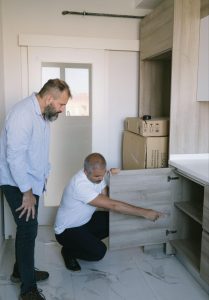The discovery of mold in a rental unit is a major concern for everyone involved. For the occupant, it’s a health and comfort issue; for the property owner, it’s a serious maintenance and liability issue.
In Ontario, the law does not provide a single, fixed number—such as “48 hours” or “7 days”—for mold remediation. Instead, the legal requirement is to act within a “reasonable amount of time.” This ambiguity is why understanding both the legal minimum and the practical best practices is essential.
The Legal Obligations (The “Reasonable Time” Standard)
The legal timeline for mold remediation is governed by the owner’s overriding duty under the Residential Tenancies Act (RTA).
1. The Core Legal Duty
The RTA, specifically Section 20(1), states that a property owner must:
- Keep the rental unit in a good state of repair and fit for habitation.
- Comply with all health, safety, housing, and maintenance standards.
Because mold, especially extensive or toxic mold, violates the unit’s fitness for habitation, the owner has a legal duty to fix it.
2. What Does “Reasonable Time” Mean for Mold?
The Landlord and Tenant Board (LTB) interprets “reasonable time” on a case-by-case basis, but the severity of the issue directly impacts the required speed of response:
- For Inspection: Responding to the initial complaint and scheduling an inspection should happen immediately—typically within 24 to 48 hours. A property owner must issue 24 hours’ written notice to enter the unit for inspection (unless it’s a true emergency).
- For Repair/Remediation: The clock starts running the moment the owner is notified. A “reasonable” time means proceeding with all necessary steps without intentional delay. If remediation requires hiring certified professionals, ordering specialized equipment, or securing parts, the LTB will take those practical realities into account.
If the mold is extensive or poses a significant health risk, the expectation for action becomes almost immediate. Delays can lead to the LTB ordering a Rent Abatement (a rent reduction) for the period the unit was in disrepair, or compensation for the occupant’s damaged property. If a property owner fails to meet these obligations, the occupant may file a T6: Tenant Application about Maintenance.
The Best Practice Action Plan
To demonstrate that the issue was handled professionally and in compliance with the “reasonable time” standard, property owners should follow a detailed, step-by-step process:
Step 1: Immediate Response & Documentation
- Acknowledge Immediately: Respond to the occupant’s complaint in writing to confirm receipt and show you are acting.
- Start a Log: Document the date of complaint, all communications, and every subsequent action taken.
Step 2: Investigation (Within 24–48 Hours)
- Enter with Notice: Use the legally required 24-hour written notice to enter and inspect the unit.
- Identify the Cause: The most critical step is determining the source of the moisture (e.g., a leak, broken fan, foundation issue). Simply cleaning the mold without fixing the cause is a breach of duty.
Step 3: Stop the Moisture Source (Priority)
- Immediately schedule and complete repairs to stop the source of water intrusion. This might involve a plumber, roofer, or foundation specialist.
Step 4: Professional Remediation (For Areas > 10 Sq. Ft.)
- For mold patches larger than 10 square feet or mold suspected in walls/HVAC, hire a certified mold remediation specialist.
- The professionals will use containment measures and remove all contaminated materials (like drywall).
Step 5: Post-Remediation Verification
- After the cleaning and drying phase, arrange for a Post-Remediation Clearance Test (air quality test). This report is crucial legal proof that the mold has been safely and successfully removed.
Step 6: Communicate and Finalize
- Inform the Occupant: Provide the occupant with the clearance report and confirm that the work is complete.
- Document Costs: Keep all invoices, receipts, and reports for legal protection.
By following these best practices, the property owner not only resolves the immediate issue but also minimizes legal risk by creating a verifiable trail of prompt, professional, and thorough action.





